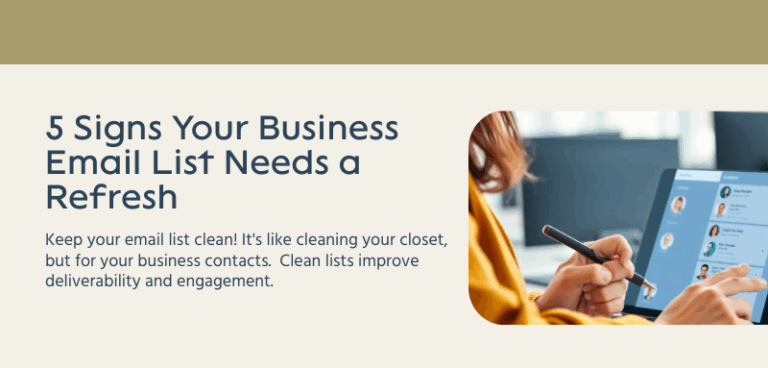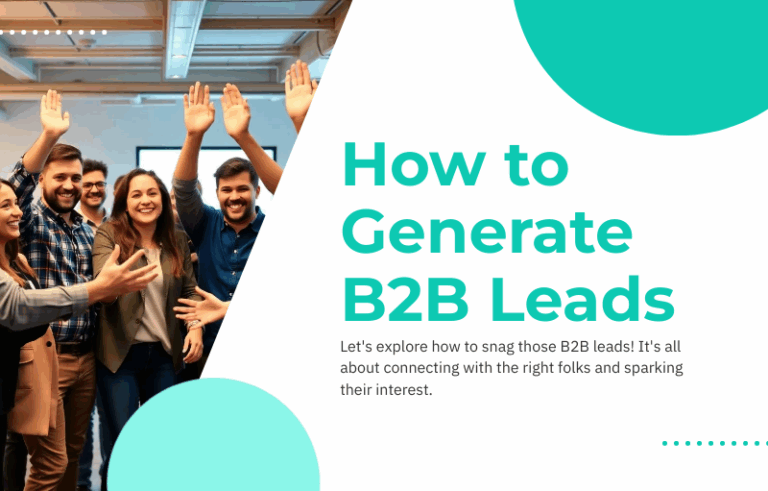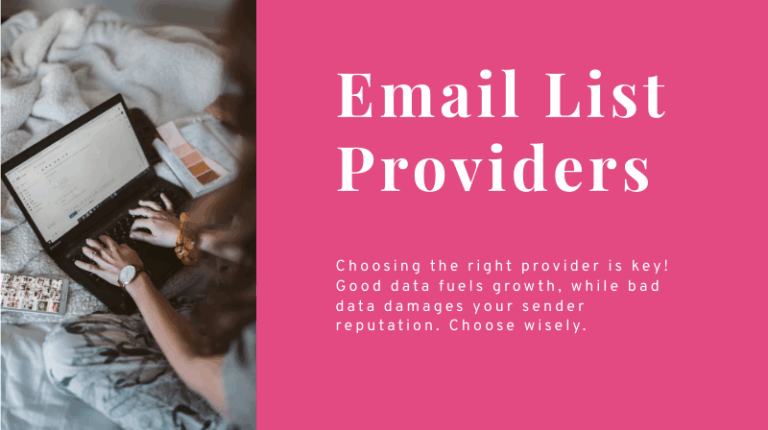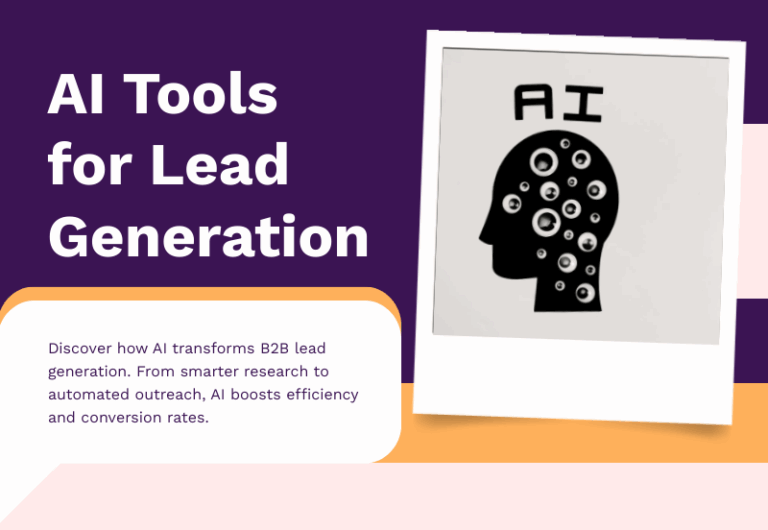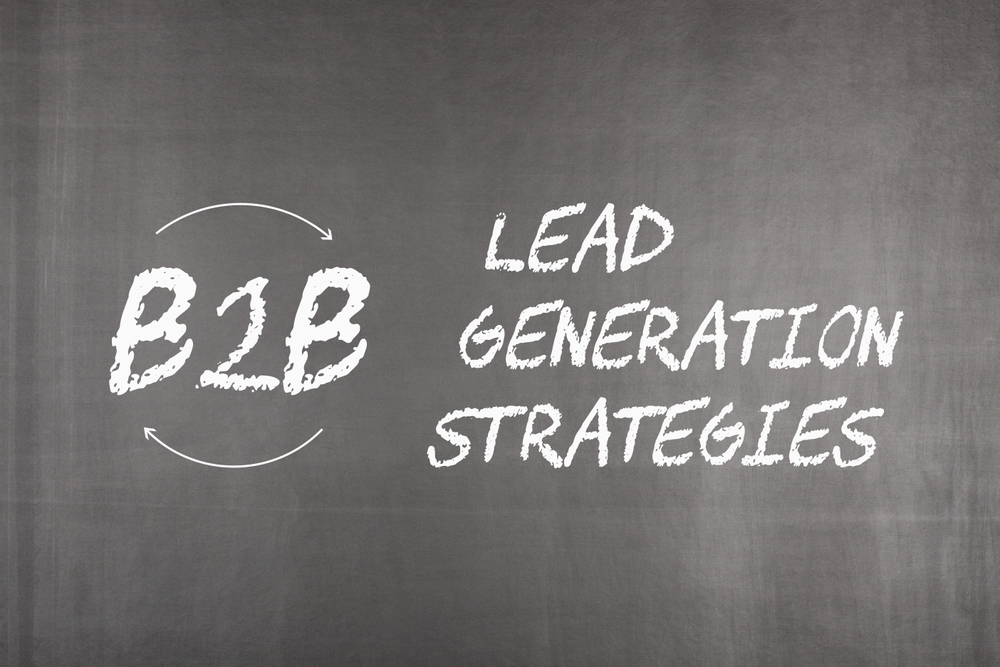
In B2B marketing, businesses are constantly searching for innovative methods to attract high-quality leads. While foundational knowledge, like understanding what is B2B lead generation, is critical, advanced strategies can set your business apart, ensuring long-term scalability and ROI.
This article explores sophisticated approaches, tools, and techniques to amplify your B2B lead generation efforts while maintaining alignment with the latest trends in the market.
Leveraging AI and Automation in B2B Lead Gen
Artificial intelligence (AI) and automation are transforming the way businesses approach lead generation. Tools like predictive analytics can help identify which prospects are most likely to convert, while AI chatbots streamline initial touchpoints.
Benefits of AI-Driven Strategies
- Improved Targeting: AI analyzes data to identify ideal customer profiles.
- Enhanced Lead Scoring: Automation tools like HubSpot and Marketo prioritize leads based on behavior and engagement.
To fully leverage these technologies, learn how marketing automation fuels lead generation and integrate them with your existing CRM systems.
Multi-Channel Lead Generation Techniques
An omnichannel approach ensures your message reaches prospects wherever they are most active. Here are some key channels to focus on:
- LinkedIn Advertising: Target specific industries, job titles, and locations.
- Webinars: Establish thought leadership while capturing attendee information.
- Account-Based Marketing (ABM): Customize outreach efforts for high-value accounts.
Explore the benefits of webinars for lead generation in this dedicated post.
Optimizing Landing Pages for Conversion
Your website is often the first interaction prospects have with your business. Optimized landing pages with compelling CTAs can significantly boost conversion rates.
Best Practices
- Use concise, benefit-driven headlines.
- Incorporate social proof, such as testimonials or case studies.
- Ensure fast load times and mobile responsiveness.
For insights on designing effective landing pages, check out Landing Pages That Send Conversion Rates Soaring.

Measuring and Optimizing Lead Gen ROI
Data-driven insights are essential for refining your strategies. By tracking key metrics like cost per lead (CPL) and lead-to-customer conversion rates, businesses can identify areas of improvement.
Tools for Measuring ROI
- Google Analytics: Track user behavior and campaign performance.
- CRM Software: Monitor lead progression through the sales funnel.
Learn more about measuring lead generation accuracy for better decision-making.
Challenges in Scaling B2B Lead Gen
As lead generation scales, challenges such as maintaining personalization and integrating new technologies emerge.
Common Issues
- Loss of personalization in mass outreach campaigns.
- Difficulty in aligning sales and marketing teams.
Discover how streamlining the sales-marketing connection can address these challenges effectively.
Embracing Account-Based Marketing (ABM)
Account-Based Marketing (ABM) has emerged as a pivotal strategy in B2B lead generation, focusing on high-value accounts with personalized outreach. By aligning marketing and sales efforts, ABM ensures that resources are concentrated on prospects with the highest potential for conversion.
Implementing ABM Effectively
- Identify Target Accounts: Utilize data analytics to pinpoint organizations that align with your ideal customer profile.
- Personalize Outreach: Develop tailored content and campaigns that address the specific needs and pain points of each target account.
- Align Sales and Marketing: Ensure seamless collaboration between teams to deliver a consistent and cohesive message.
For a deeper understanding of ABM’s impact on lead targeting, consider exploring Emerging Trends in B2B Lead Generation.
Leveraging Predictive Analytics
Predictive analytics harnesses historical data and machine learning to forecast future behaviors, enabling businesses to identify and prioritize leads more effectively.
Benefits of Predictive Analytics
- Enhanced Lead Scoring: Assign scores to leads based on their likelihood to convert, allowing sales teams to focus on high-priority prospects.
- Optimized Marketing Strategies: Tailor campaigns based on predictive insights to increase engagement and conversion rates.
Integrating predictive analytics into your lead generation strategy can significantly improve efficiency and outcomes.
Utilizing Intent Data
Intent data provides insights into a prospect’s behavior, indicating their readiness to purchase. By analyzing online activities such as content consumption and search queries, businesses can tailor their outreach to meet potential clients at the right stage of their buying journey.
Applying Intent Data
- Behavioral Analysis: Monitor prospects’ online activities to gauge their interest levels and identify intent signals.
- Personalized Engagement: Craft messages that directly address the prospect’s current interests and needs, increasing the likelihood of conversion.
Understanding and responding to buyer intent is crucial for effective lead generation.

Integrating AI-Powered Chatbots
Artificial Intelligence (AI) chatbots have revolutionized customer interaction by providing instant responses and personalized experiences. Incorporating AI chatbots into your lead generation strategy can enhance engagement and streamline the qualification process.
Advantages of AI Chatbots
- 24/7 Availability: Engage with prospects at any time, ensuring no lead is missed.
- Personalized Interactions: Utilize AI to understand and respond to individual prospect needs, creating a tailored experience.
- Efficient Lead Qualification: Quickly assess and categorize leads based on their responses, directing them to the appropriate sales channels.
For insights into how AI is transforming lead generation, refer to The Future of B2B Lead Generation: Trends to Watch in 2024.
Implementing Advanced Segmentation
Advanced segmentation involves dividing your target market into distinct groups based on specific criteria, allowing for more personalized and effective marketing efforts.
Strategies for Advanced Segmentation
- Demographic Segmentation: Categorize leads based on industry, company size, job role, etc.
- Behavioral Segmentation: Group leads according to their interactions with your brand, such as website visits, content downloads, and email engagement.
- Firmographic Segmentation: Segment based on company attributes like revenue, number of employees, and geographic location.
By not leveraging advanced segmentation in your B2B lead generation tactics, you risk damaging a client relationship before it even starts. Implementing these strategies can elevate and empower your lead generation efforts.
Enhancing Data Privacy and Compliance
In an era where data breaches are prevalent, ensuring data privacy and compliance is paramount. Building trust with prospects involves transparent data collection and adherence to regulations.
Best Practices for Data Privacy
- Transparent Data Policies: Clearly communicate how data is collected, stored, and used.
- Regulatory Compliance: Adhere to data protection laws such as GDPR and CCPA to avoid legal repercussions and build trust.
- Secure Data Handling: Implement robust security measures to protect sensitive information from breaches.
Prioritizing data privacy not only ensures compliance but also fosters trust with potential clients.
Exploring Emerging Technologies
The integration of emerging technologies like Augmented Reality (AR), Virtual Reality (VR), and the Internet of Things (IoT) is reshaping B2B lead generation.
Applications in Lead Generation
- Augmented Reality and Virtual Reality: Offer immersive experiences to showcase complex products, providing unique value propositions.
- Internet of Things (IoT): Leverage data from connected devices to gain insights into customer behavior, enabling more targeted marketing efforts.
By offering immersive experiences, these technologies can help businesses showcase complex products and provide unique value propositions.
Adopting Sustainable and Ethical Practices
Modern consumers and businesses are increasingly evaluating potential partners based on their values and the impact of their business practices. Adopting sustainable and ethical lead generation practices can enhance your brand’s reputation and appeal.
Implementing Ethical Practices
- Transparent Supply Chains: Ensure clarity and honesty in your sourcing and production processes.
- Environmental Responsibility: Adopt eco-friendly practices to minimize your carbon footprint.
- Fair Labor Practices: Commit to ethical labor practices, supporting fair wages and working conditions.
By integrating these practices, you align your lead generation efforts with the values of today’s socially conscious market.
Incorporating these advanced strategies into your B2B lead generation efforts can significantly enhance your ability to attract and convert high-quality leads, ensuring scalable growth and sustained success.

Implementing A/B Testing for Continuous Improvement
A/B testing, or split testing, is a data-driven method for comparing two versions of a webpage or marketing material to determine which performs better. This approach enables businesses to make informed decisions and optimize lead generation tactics.
Best Practices for A/B Testing
- Define Clear Objectives: Establish what you aim to achieve, such as higher click-through rates or increased conversions.
- Test One Variable at a Time: Isolate a single element—like a headline or call-to-action—to accurately assess its impact.
- Analyze Results Thoroughly: Use statistical analysis to determine the significance of your findings before implementing changes.
Regular A/B testing allows for continuous optimization of marketing strategies, leading to more effective lead generation efforts.
Utilizing LinkedIn for Targeted Lead Generation
LinkedIn stands as a formidable platform for B2B lead generation, offering access to a vast network of professionals and decision-makers. Its targeting capabilities enable precise outreach, enhancing the quality of leads.
Strategies for Effective LinkedIn Lead Generation
- Optimize Your Profile: Ensure your company and personal profiles are professional and clearly communicate your value proposition.
- Engage with Content: Share insightful content and participate in industry discussions to establish thought leadership.
- Leverage LinkedIn Ads: Utilize LinkedIn’s advertising options to target specific demographics and industries.
By actively engaging on LinkedIn, businesses can connect with potential clients and foster relationships that lead to conversions.
Aligning Sales and Marketing Teams
A harmonious relationship between sales and marketing teams is crucial for successful lead generation. Alignment ensures that both teams work towards common goals, enhancing efficiency and effectiveness.
Steps to Achieve Alignment
- Establish Open Communication: Facilitate regular meetings and information sharing between teams.
- Define Shared Objectives: Set common goals and metrics to measure success collaboratively.
- Implement Feedback Loops: Encourage continuous feedback to refine strategies and address challenges promptly.
Aligned teams can create a seamless experience for potential clients, increasing the likelihood of successful lead conversion.
Embracing Multi-Channel Lead Generation
Diversifying lead generation efforts across multiple channels ensures a broader reach and mitigates the risk associated with relying on a single source.
Key Channels to Consider
- Content Marketing: Develop valuable content that addresses the needs and interests of your target audience.
- Email Campaigns: Utilize personalized email outreach to nurture leads and maintain engagement.
- Webinars and Events: Host informative sessions that showcase your expertise and provide networking opportunities.
A multi-channel approach allows businesses to engage prospects at various touchpoints, increasing the chances of lead conversion.
By integrating these advanced strategies into your B2B lead generation efforts, you can enhance scalability and drive sustainable growth. Continuous evaluation and adaptation of these tactics will ensure they remain effective in an ever-evolving market landscape.
